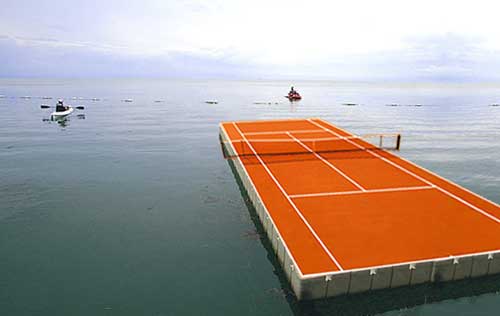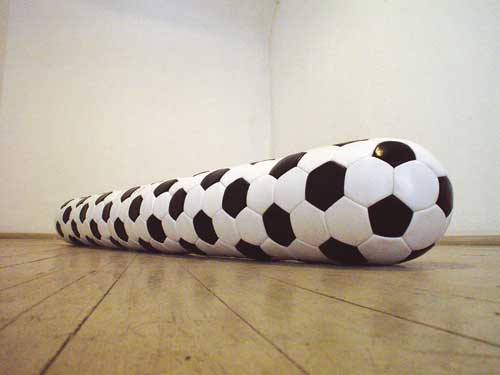


Although I can't find a current exhibition for him, I find his work incredibly austere, and his ideas about memory and perception are interesting in relation to my own work.
 "In the photo, a stairway leads up to an open door in the side of an airplane. Haven't you seen this somewhere before? Yes, usually there's a visiting dignitary standing at the top of the stairs waving to the press and fans. But there are no people in this photo. And the backdrop isn't real. German artist Thomas Demand (b. 1964) made it entirely from cardboard, colored paper and glue.
"In the photo, a stairway leads up to an open door in the side of an airplane. Haven't you seen this somewhere before? Yes, usually there's a visiting dignitary standing at the top of the stairs waving to the press and fans. But there are no people in this photo. And the backdrop isn't real. German artist Thomas Demand (b. 1964) made it entirely from cardboard, colored paper and glue.Demand bases his paper models on found images, reproducing their perspective, color, and scale. The airplane photo Gangway (2001), for example, mimics a news photo of the Pope visiting Berlin. The other three photos (and one series) in Demand's debut solo show in Japan are reconstructions of gold bullion, an empty locker room, tenement apartments, and leaves. Demand builds the paper models full-scale, meaning the airplane and stairway were built the same size as a real airplane and stairway. The prints, too, are 1:1 scale-Gangway is over two meters high-giving a clear view onto the rumpled surfaces and loose edges of Demand's paper-thin memories. "They're like windows," says the artist.
 Windows into the past, perhaps. Demand, trained as a sculptor, never keeps his paper creations. He builds them, photographs them, and then destroys them. Though superficially similar to the miniature-paper Mercedes and AmEx cards of Chinese funerals (both address the transitory), Demand's models are more like movie sets. They exist to be photographed and last only as long as the shoot. And in this process of documentation, sculpture and photograph become one.
Windows into the past, perhaps. Demand, trained as a sculptor, never keeps his paper creations. He builds them, photographs them, and then destroys them. Though superficially similar to the miniature-paper Mercedes and AmEx cards of Chinese funerals (both address the transitory), Demand's models are more like movie sets. They exist to be photographed and last only as long as the shoot. And in this process of documentation, sculpture and photograph become one. Movie sets are made to look as genuine as possible, down to real Coke cans and faux wood grain. Demand (who has made several short films), however, strips away fine details like text, producing too-clean, generic versions of things. The tops of the gold bars in Bullion (2003), for example, are embossed with a simple circle, not origin and purity stamps. Even his trash looks new; the crumpled cup under the bench in the locker room scene Kabine (2002) was never used for drinking, only as a prop to signify "used cup."
Demand is a one-man scene shop creating images that anticipate dramatic moments. Yet there are never any people in the photos; the drama is forever suspended. This absence focuses attention on the uncanny stillness of Demand's photographic trompe l'oeil. Ironically, the sets are analogous to figures in a wax museum; they are both very real and very fake."
© http://metropolis.co.jp/tokyo/486/art.asp